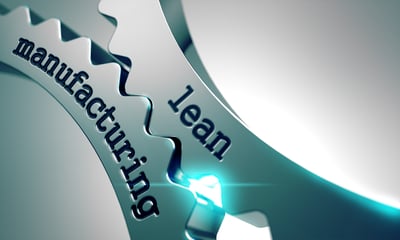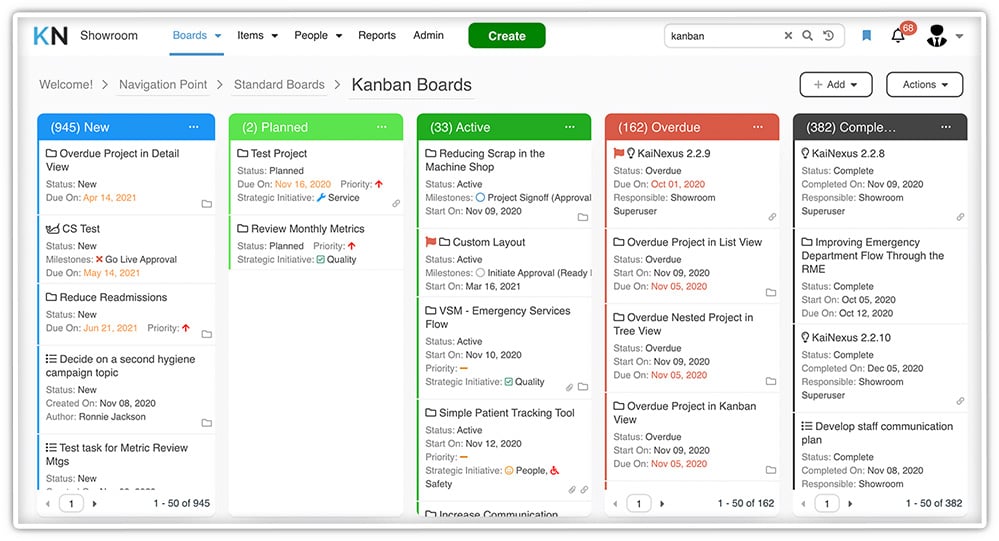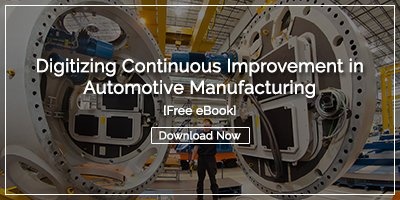 Lean manufacturing, also known as Lean management, or Lean Six Sigma, is a structured business improvement method that helps organizations achieve their short and long-term strategic goals and objectives. The approach started in the manufacturing sector, hence the name, but it is now widely used by all types of organizations. Lean manufacturing tools and techniques are used in organizations as diverse as software development, education, healthcare, and construction.
Lean manufacturing, also known as Lean management, or Lean Six Sigma, is a structured business improvement method that helps organizations achieve their short and long-term strategic goals and objectives. The approach started in the manufacturing sector, hence the name, but it is now widely used by all types of organizations. Lean manufacturing tools and techniques are used in organizations as diverse as software development, education, healthcare, and construction.
Lean manufacturing rests on three fundamental ideas:
- Deliver maximum value as defined by the customer
- Everything that does not add value to the customer is waste and should be minimized
- Continuous improvement is essential
These ideas are supported by the core belief that respecting people is the only way to achieve success.
If you had to define Lean manufacturing in one sentence, you might say that Lean manufacturing is a method for delivering maximum value to customers through continuous improvement.
The Evolution of Lean Manufacturing
After the uncertainty and disruption of World War II, Toyota launched a comprehensive effort to improve its products while lowering costs by minimizing activities that weren't adding value to the product delivered to customers. By doing so, they succeeded in significantly improving cycle time, productivity, and overall efficiency. This hyper-focus on enhancing the quality and maximizing value was adopted by others in the Japanese auto industry and is part of the reason that Japanese-made cars later dominated the worldwide market.
Toyota called the approach the Toyota Production System, but in 1988 John Krafcik penned an article titled "The Triumph of the Lean Production System." In it, he introduced the principles practiced by Toyota as Lean manufacturing.
The 5 Principles of Lean Manufacturing
The basic principles are:
Define What the Customer Sees as Value
The purpose of every company is to deliver a product or service for which the customer is willing to pay. For this reason, value can only be defined by the customer. Value comes from solving customer problems and meeting their needs. Any activity, task, or material that doesn't equate to customer value is considered waste.
Map the Value Stream
To minimize waste, it is necessary to understand the workflow of the entire organization, including all of the people, processes, actions, equipment, and raw materials that create customer value. The method of mapping the value stream and the supply chain helps organizations identify elements that are not contributing to value. After the value stream is visualized, targets for waste reduction or elimination are apparent.
Create Flow
In addition to eliminating waste from the value stream, it is necessary to ensure that the flow of value is continuous and unblocked. Creating flow is a cross-functional endeavor that must be continuously monitored. Ideally, visual management identifies interruptions and bottlenecks that impede flow.
Implement a Pull System
In Lean manufacturing, a pull system means that work in progress is only pulled into the succeeding process or activity when there is real-time customer demand. This way, leaders can optimize resource capacity, ensure flow and reduce the need for excess inventory. The approach also improves quality and reduces spoilage.
An excellent example of a pull system is Chipolte. They don't have a bunch of burritos sitting around waiting for you to come in and pick one up. Instead, they wait until you arrive to assemble your lunch, ensuring that you get what you want, that it is fresh, and that unwanted burritos don't go to waste.
Widely Engage in Continuous Improvement
Lean manufacturing isn't an event or a goal. It is a long-term daily practice of making small changes that adjust to changing conditions and customer needs. Every process is part of the overall organizational system. Even well-managed processes will experience fluctuations and problems, so the pursuit of improvement must be practiced by every employee to ensure lasting success.
The Advantages of Lean Manufacturing
Lean manufacturing took hold so broadly because it is flexible enough to be used by many organizations but still structured enough to support essential benefits. Here are a few of the most important:
Operational Focus: The Lean manufacturing methodology helps keep everyone focused on the mission to deliver customer value with minimal waste. Because of this shared objective, decision-making is more straightforward, and priorities are clear.
Increased Productivity and Efficiency: Through value stream mapping, leaders can eliminate unnecessary process steps and activities, making everyone far more productive and efficient.
Maximization of Material and Human Resources: Using a pull system to respond to actual customer demand leads to better utilization of people's time and materials.
More Effective Employee Engagement: Lean manufacturing turns the strategic objectives into everyone's primary purpose. Continuous improvement is a front-line endeavor, requiring the full engagement of every team member. When engaged, employees are more productive, stay with the organization longer, and are more likely to contribute to their professional development.
The 8 Wastes of Lean Manufacturing
Most organizations experience some evident and easy to fix waste, but in most, additional waste is harder to spot. That's why Lean practitioners have categorized waste into eight categories—knowing what to look for goes a long way to rooting out waste.
Inventory: Creating or purchasing more raw materials, finished goods, supplies, or other unneeded items.
Waiting: A block in flow that occurs when processes are stalled because the required resources or inputs are not ready.
Transportation: The unnecessary movement or movement over a longer distance than necessary of raw materials, supplies, or products.
Motion: The unnecessary movement of people or equipment.
Defects: Process results that do not meet quality standards or require rework.
Over-production: A disruption to the pull system that occurs when work-in-progress or products not yet needed by the customer or the internal process are created.
Over-processing: Features, information, or packaging added to a product or service that the customer does not need or value.
Human Potential: Underutilization of the skills, talents, time, or creativity of team members.
Lean Manufacturing Tools and Techniques
While each organization will implement the Lean principles in its unique way, a few specific tools and techniques are widely used to support continuous improvement and solve problems.
Standard Work: Standard work is the practice of defining the current best practice for any task or process. It is developed by the process operators and forms the baseline for future improvements. When work is done to the standard, consistent process results are expected. The standard work document is always accessible to the people doing the work, and it is updated every time an improvement is made.
Plan, Do, Study, Adjust (PDSA): PDSA is a structured improvement and problem-solving cycle. First, the team develops a plan related to a problem statement, implements proposed solutions, studies the results, and adjusts the standard work if the improvement is successful. If not, the cycle begins again.
Kanban Boards: Kanban boards are a visual tool used to show the progress of work in progress. They help teams understand the state of flow and pull at any time.

Catchball: Catchball is the simple concept of "passing" a problem statement or idea for improvement among various stakeholders for additional input and consideration. The "ball" moves around as the best course of action is discussed, and a more refined idea is developed.
The 5 Whys: The 5 Whys is a brilliantly simple problem-solving technique that helps teams apply an improvement to the root causes of problems rather than simply addressing the symptoms. The problem is stated, and then the process operators ask "why" as many times as necessary to get to the root cause. The number will vary, but five is usually enough.
Fishbone Diagrams: Fishbone diagrams are an excellent way to visualize potential causes for the most complex problems. The diagram looks like a basic fish skeleton with the head representing the problem statement. Each of the "bones" is a category of potential cause. The approach ensures that each type of possible cause is considered before an improvement plan is created.
Lean Software: All of the techniques above and many others are most easily managed with the help of Lean manufacturing software. It proves a platform for storing information, managing projects, visualizing workflow, and reporting results.
It is impossible to cover all of the nuances in one article, but hopefully, this definition of Lean manufacturing has been helpful. Please check out our other valuable resources, and feel free to reach out to our team if you'd like to learn more about how our customers are achieving success with Lean.




Add a Comment